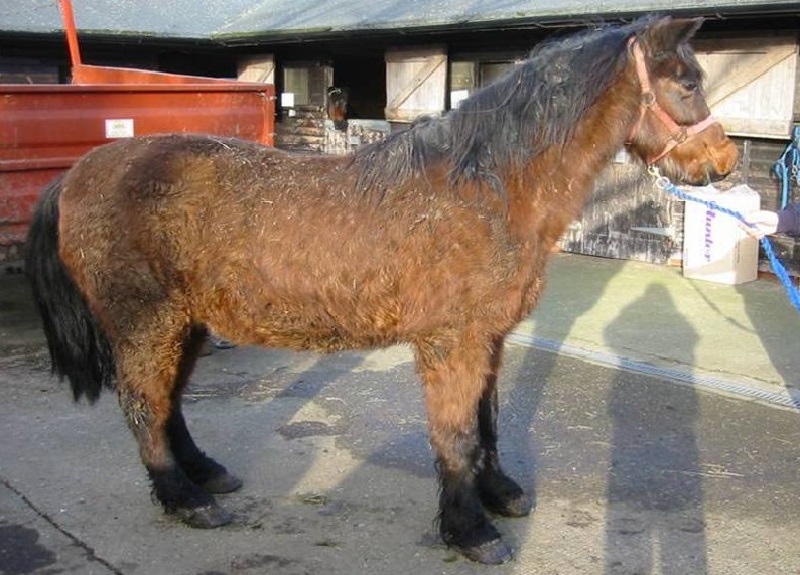24 hour contact: 01707 666297
Equine Cushing's disease
Equine Cushing's disease is more correctly known as pituitary pars intermedia dysfunction (PPID). It involves the pituitary gland, which is a gland located at the base of the brain that produces hormones in response brain signals.
In PPID, the normal mechanisms which control hormone production by the pituitary gland are damaged so that the inhibitory part is lost. Thus there is excessive production of the normal hormones from the pituitary. These hormones then enter the circulation and affect the whole body. Clinical signs include increased coat length and delayed shedding of the winter coat, laminitis, lethargy, increased sweating, weight loss and excessive drinking and urinating.
The disease primarily affects those over the age of 10, with 19 being the average age at diagnosis. It can be quite prevalent in aged equine populations. One retirement centre were found to have 14% of residents with PPID. Ponies are more likely to be affected than horses, but mares and geldings are equally likely to be affected.

Causes
The underlying cause of PPID is loss of inhibition of the pars intermedia region of the pituitary gland. As a result, the gland becomes enlarged and there is a marked increase in the production of certain hormones. There can also a compression of the other areas of pituitary gland with a reduction in the production of other hormonesor compression of adjacent parts of the brain, resulting in blindness and seizures.
Clinical signs
Signs of the disease include:
- Increased coat length, and failure to shed coat in summer
- Weight loss
- Polydipsia and polyuria (increased drinking and urination)
- Lethargy
- Increased sweating
- Laminitis
Affected animals are also more susceptible to infections such as sinusitis, skin infections and parasitism.
Diagnosis
Diagnosis is based on history, clinical signs, and specific hormone tests. Testing for the disease is not straightforward, it complicated by:
- The slow progressive nature of disease
- False negative results are common for all tests early in disease
- Tests are much more reliable as the disease progresses
- Seasonal variation in hormone output
- Lack of a true gold standard
The currently recommended tests are measurement of ACTH hormone concentrations or performing a TRH stimulation test.
Treatment and management
Medical treatment includes dopamine agonists, serotonin antagonists and cortisol antagonists. Dopamine agonists (pergolide) replace lost inhibition of the pituitary gland and are licenced for the treatment of the disease in the UK. These are reported to be effective in 65-85% of cases. Side effects include diarrhoea, depression, anorexia and colic. If pergolide fails to control the clinical signs, serotonin antagonists which also replace lost inhibition of the pituitary and probably work by increasing dopamine can be added to the treatment.
Not all owners will elect to treat the disease. It will depend on which clinical signs a particular animal has and how severe these are. In some cases all that will be done is manage clinical signs, such as laminitis, secondary infections and excessive hair growth, as well as modify the diet.
Key points
- PPID involves the pituitary gland
- Clinical signs include excessive coat length, weight loss, increased sweating, excessive drinking and urination, and laminitis
- The average age of horses getting the disease is 19 years. It can be hard to make a firm diagnosis in the early phase of the disease
- There are a number of medical treatments that can control the disease but it is incurable

